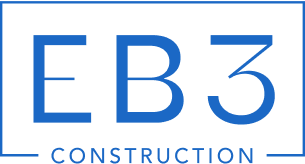When projects face delays, cost overruns, or scope gaps, the root cause often lies in fragmented accountability across multiple contracts. Single-source accountability construction consolidates responsibility under one contract, placing a single entity in charge of both design and construction phases.
This delivery model creates one point of contact and one point of responsibility throughout project execution. All subcontractor coordination and project partners flow through this central hub, eliminating the traditional handoffs between separate design and construction teams that can create coordination gaps and disputes.
Where Does Single-Source Accountability Fit Among Delivery Methods?

Different delivery methods distribute accountability across contracts in distinct ways. Each approach affects how we coordinate work, manage risk, and maintain project control through completion.
Design-Build Accountability Structure
Design-Build creates true single-source accountability through one unified contract covering both design and construction phases. The design-builder serves as the owner’s single point of contact throughout the entire project lifecycle. This consolidation eliminates the traditional handoff between separate design and construction teams that can create coordination gaps.
We see faster decision-making when design and construction teams work under one contract structure. Cost predictability improves because the same entity that designs the project also builds it, reducing the disconnect that often leads to change orders in other delivery methods.
Design-Bid-Build Traditional Structure
Design-Bid-Build maintains separate contracts for design and construction, creating two distinct accountability points for owners to manage. The sequential approach requires complete design before construction bidding begins, extending overall project schedules. This separation can increase coordination risk when constructability issues emerge during the build phase.
Change orders become more common in this model when contractors encounter design elements that present construction challenges. The lack of early contractor input during design development often results in scope adjustments that affect both schedule and budget.
Construction Manager At Risk Positioning
CMAR improves accountability by bringing the construction manager into the process early while maintaining separate contracts for design and construction. The construction manager provides cost feedback and constructability reviews during design development. A Guaranteed Maximum Price (GMP) establishes cost certainty before construction begins.
This model offers better coordination than Design-Bid-Build while stopping short of the full integration seen in Design-Build. Risk allocation becomes clearer through the GMP structure, though accountability still involves multiple contracting parties.
Integrated Project Delivery Collaboration
IPD uses a multi-party agreement that aligns all key stakeholders under shared risk and reward structures. All parties commit to collaborative decision-making from project inception through closeout. This approach requires deep upfront alignment on goals, processes, and compensation structures.
The shared accountability model works best when all parties have extensive IPD experience and strong collaborative relationships. Schedule risk decreases through integrated planning, but the model demands significant coordination investment from all participants.
Each delivery method positions accountability differently based on contract structure and stakeholder relationships. We evaluate these options against project requirements, owner preferences, and risk tolerance to determine the best fit for successful project delivery.
What Benefits And Trade-offs Should Owners Expect?
Single-source accountability delivers clear advantages to property owners and developers, but comes with considerations that require careful planning and contract structure. We see these patterns consistently across projects where unified responsibility shapes both opportunity and risk.
Key Benefits For Developers And Property Owners
Single point of responsibility eliminates the finger-pointing between separate design and construction teams. When issues arise during construction, we resolve them internally rather than mediating disputes between architects and contractors. This consolidated accountability closes scope gaps that often emerge when multiple parties interpret drawings differently.
Overlapping design and construction phases can compress project schedules significantly. We begin sitework preparation and foundation planning while architectural details are still being refined. This parallel workflow accelerates project timelines compared to sequential design-bid-build approaches, particularly valuable when market timing or occupancy deadlines drive decision-making.
Early collaboration between our design and construction teams improves both cost control and quality outcomes. Constructability reviews happen during design development, not after bid award. We identify potential conflicts between mechanical, electrical, plumbing, and fire protection (MEPF) systems before they reach the field, reducing expensive change orders and rework.
Risk allocation becomes clearer when one entity handles both design adequacy and construction performance. Issues get solved faster because we control the entire delivery process. Trade-level competition remains market-based since we still bid subcontractor packages competitively, maintaining cost discipline while preserving unified project leadership.
Trade-offs That Require Owner Consideration
Owners must feel comfortable placing design and construction responsibility with a single entity. This requires trust in our team’s capabilities and experience across both disciplines. Some developers prefer the perceived checks and balances of separate designer and contractor relationships, though this often creates more coordination challenges than protection.
Contract clarity becomes essential when one entity assumes expanded responsibility. We work with owners to establish clear roles, risk allocation, and approval milestones upfront. Ambiguous contract language creates disputes regardless of delivery method, but concentrated responsibility requires particularly precise definition of scope, performance standards, and change management procedures.
Design optionality concerns sometimes surface when owners worry about creative limitations. Regular owner approval checkpoints address this concern by establishing review milestones where design direction can be confirmed before construction elements become locked in. We structure these checkpoints to maintain schedule momentum while preserving owner input at critical decision points.
Complex MEPF-heavy projects actually benefit significantly from integrated teams. When mechanical ductwork, electrical distribution, plumbing risers, and fire protection systems must coordinate within tight ceiling spaces or equipment rooms, our unified approach prevents the clash detection and resolution delays common in traditional delivery methods.
Which Oversight Roles Strengthen Accountability In Any Model?

Construction projects benefit from independent oversight regardless of delivery method. These roles create transparency, enforce performance standards, and protect owner interests through specialized expertise. Each serves a distinct function while supporting the broader goal of project accountability.
Owner’s Representative
An owner’s representative functions as an extension of the owner’s staff throughout the project lifecycle. We coordinate with these professionals who manage schedule milestones, budget tracking, and stakeholder interests from pre-construction through commissioning. They provide dedicated advocacy for the owner’s objectives when internal capacity falls short.
The owner’s representative brings construction expertise that many property owners lack internally. Their role spans feasibility studies, contractor selection, and ongoing oversight during construction phases. This continuous engagement ensures decisions align with the owner’s long-term operational goals rather than short-term project convenience.
Project Controls
Project controls establish independent monitoring of schedule progress, cost performance, and risk management across all project phases. These specialists build a single source of truth through standardized reporting and clear KPIs that track actual performance against baseline targets. Their data-driven approach removes subjective interpretation from project status updates.
We rely on project controls to identify variance trends before they become critical issues. They maintain detailed databases of schedule float, cost forecasts, and risk exposure that inform our decision-making process. This systematic approach to performance monitoring supports accountability regardless of whether we’re working with design-build teams or traditional delivery methods.
Dispute Review Board
A dispute review board consists of neutral industry experts who meet regularly throughout project delivery to prevent and resolve conflicts before they escalate. These professionals review potential disputes during construction rather than waiting until project completion. Their proactive approach reduces costly litigation and maintains project momentum.
The board structure typically includes three members with relevant technical expertise who understand construction contracts and project delivery. They observe project progress, review documentation, and facilitate discussions between parties when disagreements arise. This real-time dispute resolution process protects both schedule and budget from the delays that formal arbitration creates.
Independent Engineer
An independent engineer verifies scope completion and quality standards against contract drawings and specifications before final acceptance. This role focuses specifically on technical compliance and workmanship verification rather than project management oversight. Their inspection and testing protocols confirm that constructed work meets design intent and performance requirements.
The independent engineer’s assessment directly impacts final payment and project closeout procedures. We coordinate with these professionals during commissioning phases to ensure systems perform as specified. Their technical validation provides confidence in asset quality and reduces long-term operational risk for building owners.
Fairness Monitor
A fairness monitor observes procurement processes to ensure transparency and competitive fairness, particularly in public work environments. This role focuses exclusively on the bidding and contractor selection phases rather than ongoing construction oversight. Their presence demonstrates compliance with procurement regulations and builds confidence among potential bidders.
Fairness monitors serve the procurement process itself rather than any individual stakeholder. They document evaluation procedures, verify that selection criteria are applied consistently, and report on process integrity to regulatory authorities. This independent verification supports public accountability requirements and reduces protest risks that can delay project starts.
Conclusion And Next Steps

Single-source accountability construction places design, cost, and build decisions under unified leadership. This approach creates clear lines of responsibility that streamline project delivery from concept through closeout. When implemented correctly, it reduces conflicts, accelerates timelines, and provides owners with transparency throughout the construction process.
Successful implementation requires careful planning from the outset. Define project goals clearly before selecting your delivery method. Choose between design-build, program management, or other models based on your specific needs for speed, cost certainty, and coordination complexity. Structure contracts with explicit roles, risk allocation, and owner approval milestones to maintain accountability while preserving flexibility.
We recommend establishing robust project governance through owner representation and independent project controls. These oversight roles create a single source of truth for cost, schedule, and risk data while maintaining quality assurance standards. Include trade-level competition and regular checkpoints to ensure market-based pricing and transparent performance monitoring throughout project closeout.
Ready to explore single-source accountability for your next project? Contact EB3 Construction to discuss how we can streamline your construction delivery.




